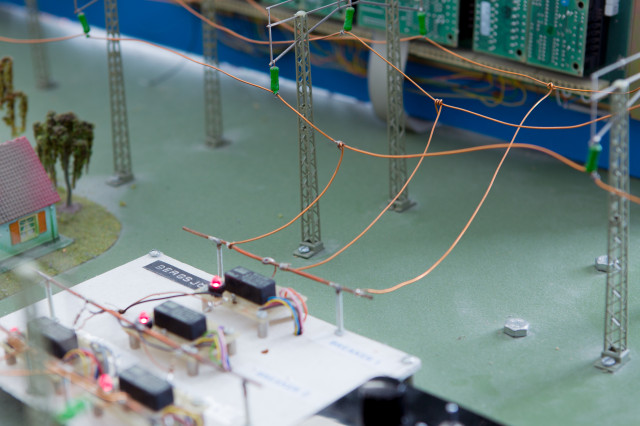Elkraftsystemet: från producent till konsument - historisk överblick och tekniska framsteg
Principerna bakom överföring med högspänd växelspänning (HVAC) respektive likspänning (HVDC)
Kraftsystemets arkitektur, ingående komponenter deras principiella funktion och konstruktion
Lagar, förordningar och standarder som styr kraftsystemet
Ställverk och stationer
Komponenter: brytare, frånskiljare, reaktorer, kondensatorer, avledare, luftledningar, kablar, kraftelektronik, transformatorer (kraft och mät), generatorer, likriktare, FACTS, isolatorer, genomföringar etc.
Isolation och isolatorer: fri luft, inkapslade med SF6 som isolationsmedium
Beräkningsmodeller för transienta förlopp, in- och urkopplingar, åsk- och kopplingsöverspänningar, felströmmar, oscillationer och resonanser.
Systemjordning
Reläkydd
Mätutrustning
Styr- och övervakning
Isolationskoordinering
Tillförlitlighet, tillgänglighet och livslängdsegenskaper. Åldringsfenomen.
Underhållsstrategier
Metoder för tillståndsövervakning och diagnostik
Efter godkänd kurs ska studenten kunna
•redogöra för olika kraftkomponenters syfte och principiella funktion samt för hur de är konstruerade
•göra beräkningsmodeller för komponenter som kan användas till beräkning av:
överspänningsvågors fortplantning i kraftsystemet,
transienta och stationära kortslutningsströmmar och tillhörande inducerande överspänningar vid olika kortslutningsfall,
transienta överspänningar och strömmar i olika in- och urkopplingssituationer. Modellerna ska kunna tillämpas på såväl linjära system som olinjära, t.ex. behandling av ferroresonans,
transienta spänningsfördelningar i komponenter med geometrisk utsträckning, t.ex. lindningar i transformatorer
•redogöra för olika typer av systemjordningar samt deras för- och nackdelar
•redogöra för olika metoder för skydd mot överspänningar
•beräkna sannolikheter för att en viss överspänning ger isolationssammanbrott (isolationskoordination)
•redogöra för vilka egenskaper som påverkar kraftkomponenternas tillförlitlighet, tillgänglighet och livslängd.
•redogöra för de olika påkänningar och materialegenskaper som påverkar en kraftkomponents utformning avseende termisk, elektrisk och mekanisk dimensionering
•redogöra för hur komponenter påverkas av omgivande miljö samt hur de påverkar sin närmiljö
•ge exempel på hur lagar, förordningar och standarder påverkar kraftsystemets konstruktion
•redogöra för de vanligaste åldringsmekanismerna och felorsakerna i elektriska apparater samt vilka metoder som kan användas för att klarlägga om en utrustning är åldrad och därför löper ökad risk för fel.
